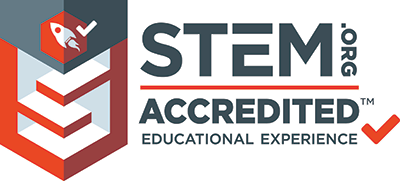Solar System Worksheets
Grade 5 Science Worksheets
The solar system refers to the collection of celestial bodies that orbit around the Sun. It consists of the Sun, the eight planets (Mercury, Venus, Earth, Mars, Jupiter, Saturn, Uranus, and Neptune), their moons, asteroids, comets, and other smaller objects. The Sun, a giant ball of hot gases, sits at the center of the solar system, exerting gravitational forces that hold the planets and other objects in their respective orbits.
Download Solar System Worksheets for Grade 5.
Each planet has its own unique characteristics, such as size, composition, and atmosphere, and they follow elliptical paths around the Sun. The solar system is a vast and fascinating expanse, offering insights into the wonders of the universe and serving as the backdrop for countless astronomical discoveries.Our Solar System is one in billions of the planetary systems that orbit around a star. The Solar System is made up of a star, eight planets and countless smaller bodies like dwarf planets, asteroids, comets and meteoroids. It is estimated to have formed around 4.6 billion years ago when a giant interstellar molecular cloud collapsed under the influence of gravity.

Schedule a Free session to clear worksheet doubts
No credit card required, no obligation to purchase.
Just schedule a FREE Sessions to meet a tutor and get help on any topic you want!
Where is our Solar System Located in the Milky Way Galaxy?
A galaxy contains a large group of stars, gas, and dust bound together by gravity. The Milky Way is a large barred spiral galaxy that contains our Solar System in one of its four spiral arms. The Solar System goes around the center of the Milky Way every 250 million years. Our Solar System is about 25,000 light-years away from the center of this galaxy. The stars that we see at night belong to Milky Way.
Structure and Composition of the Solar System
The Solar System consists of the Sun and everything bound to it by its gravity- the planets Mercury, Venus, Earth, Mars, Jupiter, Saturn, Uranus, Neptune, the dwarf planets, several moons, asteroids, comets, and meteoroids.
Familiar with the aspects of the solar system? Test your knowledge with our free solar system worksheets for Grade 5.
Learn more about The Solar System and other important topics with 5th Grade Science Tutoring at eTutorWorld. Our expert science tutors break down the topics through interactive one-to-one sessions. We also offer the advantage of customized lesson plans, flexible schedules and convenience of learning from home.
eTutorWorld Understands Math Tutoring | Online Math Worksheets are Important Tools
Understanding graphs, charts, and opinion polls in a newspaper, for calculating house and car payments, and for choosing a long-distance telephone service are impossible without strong math skills …and the only way to develop strong math skills is by constant practice.
‘Practice makes a man perfect’ holds true for no other field better than for math. A middle or high school student must set aside a minimum of an hour for math every day. Other than textbooks, worksheets help you revise and understand concepts better.
Our expert tutors prepare online maths worksheets that are age and grade-appropriate. Grade-wise math worksheets for Elementary Math, Arithmetic, Pre-Algebra, Algebra, Geometry, Trigonometry, Statistics, Pre-Calculus and Calculus can be solved to improve math skills, to get ahead or to even catch up.
You may download these FREE online math worksheets in the PDF format, and then print and email us their solutions for a free evaluation and analysis by eTutorworld’smath expert tutors.
You may solve these worksheets by yourself or with your peers while studying together.
The Answer Key at the end of each worksheet allows for a self-evaluation.
Personalized Online Tutoring
eTutorWorld offers affordable one-on-one live tutoring over the web for Grades K-12, Test Prep help for Standardized tests like SCAT, CogAT, MAP, SSAT, SAT, ACT, ISEE and AP. You may schedule online tutoring lessons at your personal scheduled times, all with a Money-Back Guarantee. The first one-on-one online tutoring lesson is always FREE, no purchase obligation, no credit card required.
For answers/solutions to any question or to learn concepts, take a FREE CLASS.
No credit card required, no obligation to purchase.
Just book a free class to meet a tutor and get help on any topic you want!
SUN
Sun is the star present at the center of the solar system. Some of its characteristics are as follows-
- It constitutes 99.86% of the total mass of the solar system.
- Its diameter is 110 times wider than Earth’s.
- The sun’s atmosphere contains 74% hydrogen, 24% helium and rest include oxygen, carbon, nitrogen, neon, iron etc.
- The Sun generates huge amounts of energy by combining hydrogen into helium in a process known as Nuclear Fusion. This generates a temperature of 9941 degrees Fahrenheit on the surface, the core temperature being around 28 million degrees Fahrenheit. Thus we get heat and light from the Sun.
- It takes 8 minutes for light from the Sun to reach Earth.
Planets
A planet is an astronomical body moving in an elliptical orbit around a star. They are massive, rounded, and spherical in the structure under the influence of their own gravitational force. There are about 8 planets in our solar system. Earth is the only habitable planet known. These planets are divided into two categories:
- TERRESTRIALS: Planets like Mercury, Venus, Earth and Mars are terrestrials and are closer to the sun. They are primarily composed of rock and metal.
- GIANT PLANETS: They are massive planets and include Jupiter, Saturn, Uranus and Neptune. Jupiter and Saturn are the most massive and are known as gas giants. They are composed mainly of hydrogen and helium. Neptune and Uranus are called ice giants. They have icy cores and are composed of substances with high melting points like water, ammonia and methane.
Schedule a Free session to clear worksheet doubts
No credit card required, no obligation to purchase.
Just schedule a FREE Sessions to meet a tutor and get help on any topic you want!

Dwarf Planets
These are worlds that are too small to be considered full-fledged planets, but too large to fall under smaller categories. Astronomers estimate that there could be as many as 200 dwarf planets in the Solar System. The confirmed names are Ceres, Pluto, Eris, Haumea and Makemake. Pluto which was earlier considered a planet has been given the status of a dwarf planet now, but the controversy still exists. The following picture depicts their sizes as compared to Mercury.
Moons
Moons, also known as natural satellites orbit around planets and asteroids. There are around 205 known moons in our solar system. Most orbit the giant planets –Saturn and Jupiter, but even smaller worlds like Pluto have moons orbiting it. They come in various shapes and sizes with some of them having atmospheres and hidden oceans. They are mostly made of rocks and some are made of ice.
The Earth-Moon relationship is a special one. It makes our planet more livable by giving us stable climatic conditions. It takes 27.3 days to orbit around the Earth.
Asteroids
Also known as minor planets, an asteroid is a small chunk of rock or even metal left from the early formation of the Solar System. They tumble and spin as they orbit around the Sun. There are over 150 million asteroids in the Solar System and their size varies from few feet to hundreds of miles in diameter. They are mostly lumpy like potatoes. Most of them are found in the main asteroid belt between the orbits of Mars and Jupiter.


Comets
Described as ‘dirty snowballs’, comets are made up of frozen gases, rocks and dust left over during the formation of the Solar System. They usually orbit around the Sun in elongated paths. As the comet gets close to the Sun, some of the ice melts and boils along with particles of dust forming a giant glowing head with a trail of debris behind it made of dust and gases. Comet Halley is a famous comet visible to the naked eye every 75-76 years.
Meteoroids
Meteoroids are ‘small bodies’ of the Solar System. They are small chunks of matter that are approximately the size of a house to the size of tiny pebbles. They are fragments of asteroids and comets. When a meteoroid enters Earth’s atmosphere, it travels faster than a bullet and collides with particles in the air resulting in a luminous phenomenon known as a meteor or a shooting star.

All these objects orbit around the Sun in a direction in which the Sun rotates. They move in a counterclockwise direction when viewed from top. Besides them, there is an interplanetary medium made up of highly tenuous gases and dust that make up the Solar System.
Check Point
- There are __________ planets in the Solar System.
- The Solar System belongs to a galaxy called _____________.
- _______________ are also known as minor planets.
- Comet ___________ appears in the Earth’s sky every 75-76 years.
- When _____________ enter the Earth’s atmosphere, they illuminate and form meteors or
shooting stars.
- __________ is the star present at the center of the Solar System.
Answer Key
- There are eight planets in the solar system.
- The Solar System belongs to a galaxy called the Milky Way.
- Asteroids are also known as minor planets.
- Comet Halley or Halley’s Comet appears in the Earth’s sky every 75-76 years.
- When meteoroids enter the Earth’s atmosphere, they illuminate and form meteors or
shooting stars.
- Sun is the star present at the center of the Solar System.
What is the solar system?
The solar system refers to the collection of celestial bodies, including the Sun, planets, moons, asteroids, comets, and other objects, that orbit around the Sun.
Where is our solar system located in the Milky Way galaxy?
Our solar system is located in the Milky Way galaxy, specifically in one of its spiral arms known as the Orion Arm or Local Spur. The Milky Way is a barred spiral galaxy, and our solar system resides roughly 26,000 light-years away from the galactic center.
Are there other solar systems in the universe?
Yes, there are billions of other solar systems, also known as planetary systems or star systems, in the universe. These systems consist of a star and various orbiting planets, moons, and other objects. The discovery of exoplanets (planets outside our solar system) has revealed the vast diversity of planetary systems throughout the cosmos.
What is the Kuiper Belt?
The Kuiper Belt is a region of the solar system beyond the orbit of Neptune, consisting of numerous icy bodies, including dwarf planets like Pluto, Eris, and Haumea, as well as many smaller objects. It is considered a relic of the early solar system and is a source of study to understand the formation and evolution of our cosmic neighborhood.
Schedule a Free session to clear worksheet doubts
No credit card required, no obligation to purchase.
Just schedule a FREE Sessions to meet a tutor and get help on any topic you want!
Pricing for Online Tutoring
| Tutoring Package | Validity | Grade (1-12), College |
|---|---|---|
| 5 sessions | 1 Month | $139 |
| 1 session | 1 Month | $28 |
| 10 sessions | 3 months | $269 |
| 15 sessions | 3 months | $399 |
| 20 sessions | 4 months | $499 |
| 50 sessions | 6 months | $1189 |
| 100 sessions | 12 months | $2249 |
5th Grade Free Worksheets
- Galaxies
- The Solar System
- Planets
- Structure of Earth
- Plate Tectonics
- Earthquakes
- Volcano and Folded Mountains
- Mountains and Oceans
- Rocks and Fossils
- The Water Cycle
- What Causes Weather Patterns?
- Types of Precipitation
- Climate
- Difference between Weather and Climate
- Impact of Environmental Changes on Humans and Other Organisms
- Plants also Adapt
- Body Systems
- Skeletal System
- Human Nervous System
- Circulatory System
- Respiratory System
- Reproductive System
- Digestive System
- Excretory System
- Atomic Theory
- States of Matter
- Mixtures
- Chemical and Physical Changes
- Types of Energy
- Energy Transformations
- What is Electricity?
- Properties of Electricity
- Uses of Electricity
- Electrical Circuits
- What is Force?
- Newton’s Laws of Motion
Image Credits
- https://msutoday.msu.edu/news/2016/astronomers-pinpoint-how-milky-way-galaxy-was-formed/
2.https://my.vanderbilt.edu/astro201solarsys/page/164/?wordfence_logHuman=1&hid=1BD0B6093844F3967615838D5B4E59FA
- https://rsc.byu.edu/vol-3-no-2-2002/our-creators-cosmos
- http://www.seasky.org/solar-system/solar-system.html
- https://scied.ucar.edu/sun-regions
- https://socratic.org/questions/what-are-some-non-major-dwarf-planets
7.https://www.perkinselearning.org/accessible-science/activities/earth-and-moon-student-built-model
- https://earthsky.org/astronomy-essentials/how-to-see-jupiters-moons
- https://nineplanets.org/asteroid-belt/
- http://www.pas.rochester.edu/~blackman/ast104/halley.html
11.http://www.oecd.org/pisa/PISA2015Questions/platform/index.html?user=&domain=SCI&unit=S641-MeteoroidsAndCraters&lang=eng-ZZZ
IN THE NEWS

Our mission is to provide high quality online tutoring services, using state of the art Internet technology, to school students worldwide.
Online test prep and practice
SCAT
SSAT
ISEE
PSAT
SAT
ACT
AP Exam
Science Tutoring
Physics Tutoring
Chemistry Tutoring
Biology Tutoring
Math Tutoring
Pre-Algebra Tutoring
Algebra Tutoring
Pre Calculus Tutoring
Calculus Tutoring
Geometry Tutoring
Trigonometry Tutoring
Statistics Tutoring
Quick links
Free Worksheets
Fact sheet
Sales Partner Opportunities
Parents
Passive Fundraising
Virtual Fundraising
Our Expert Tutors
Safe and Secure Tutoring
Interactive Online Tutoring
After School Tutoring
Elementary School Tutoring
Middle School Tutoring
High School Tutoring
Home Work Help
Math Tutors New York City
Press
©2022 eTutorWorld Terms of use Privacy Policy Site by Little Red Bird
©2022 eTutorWorld
Terms of use
Privacy Policy
Site by Little Red Bird






